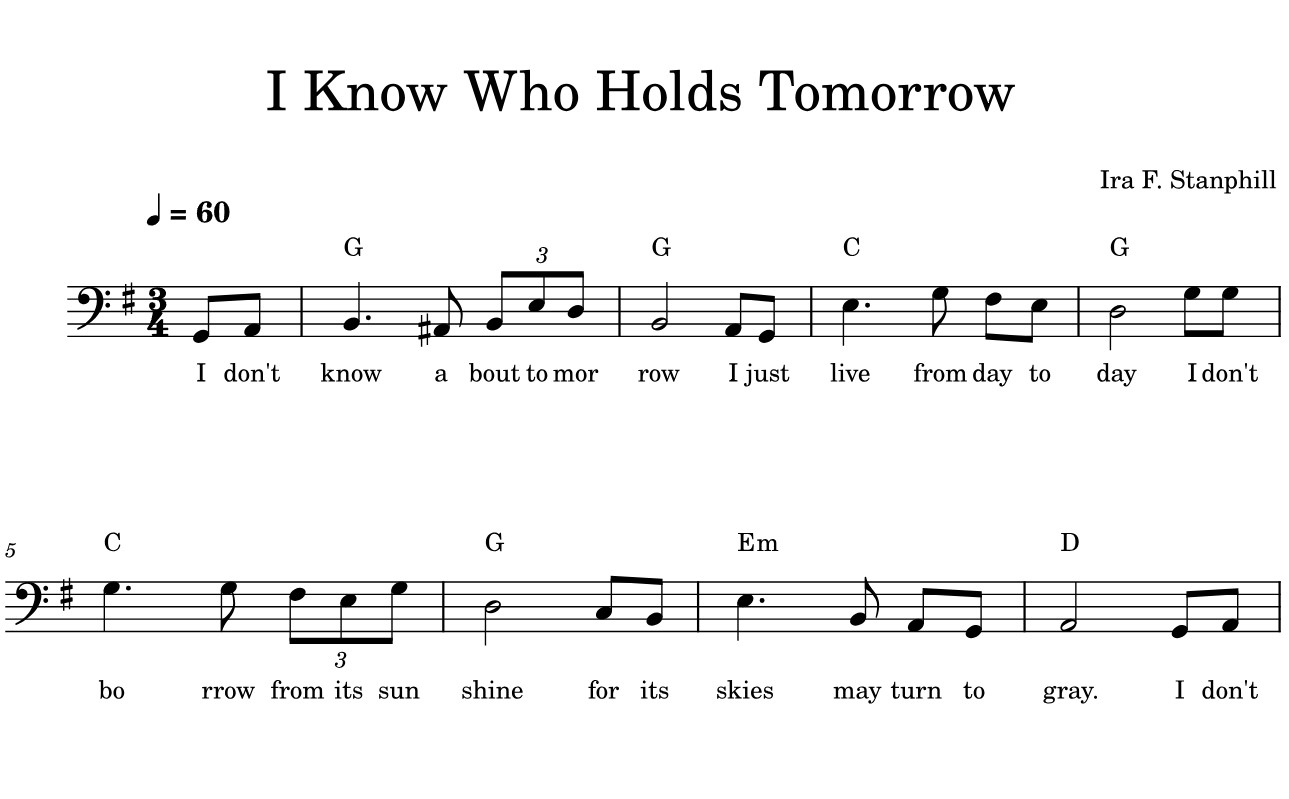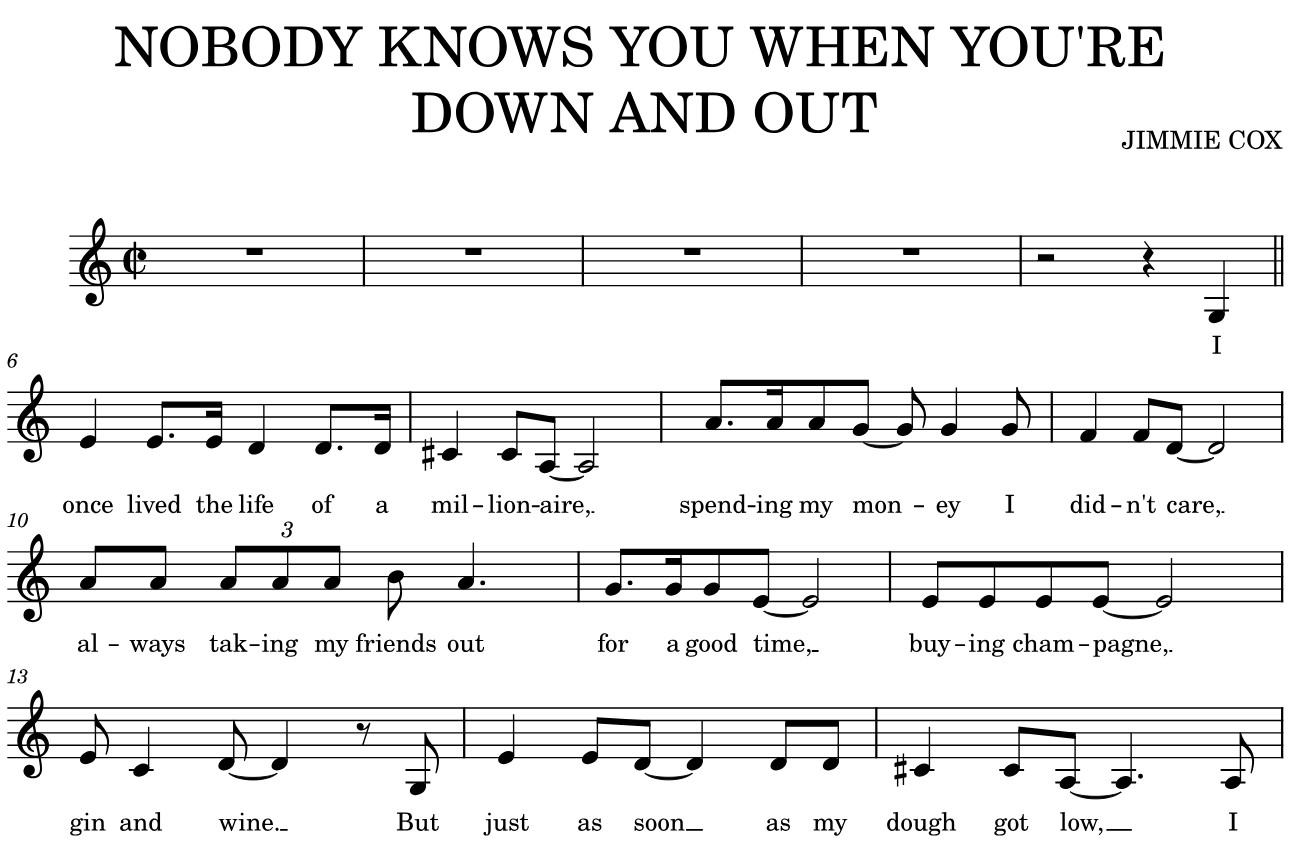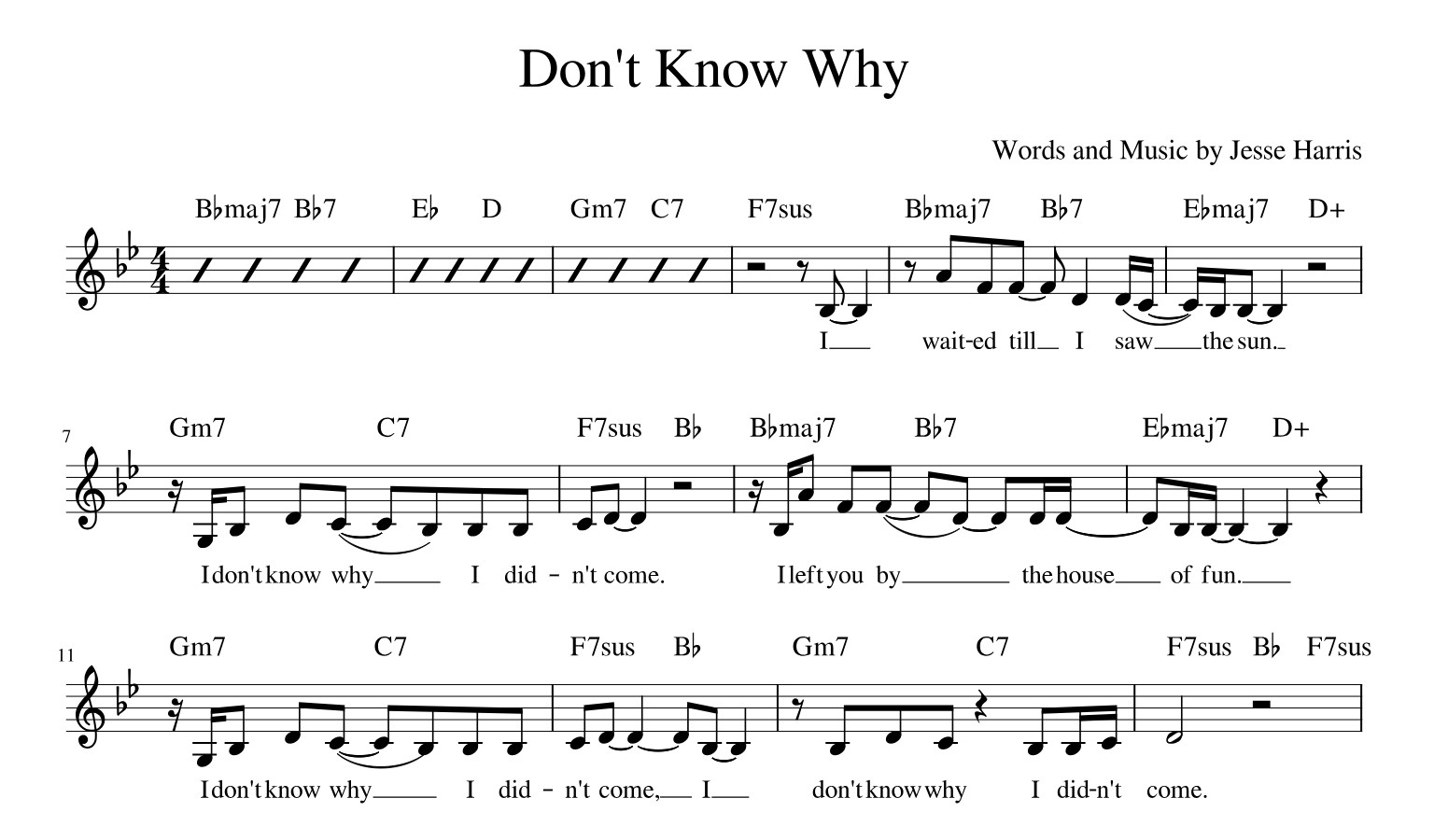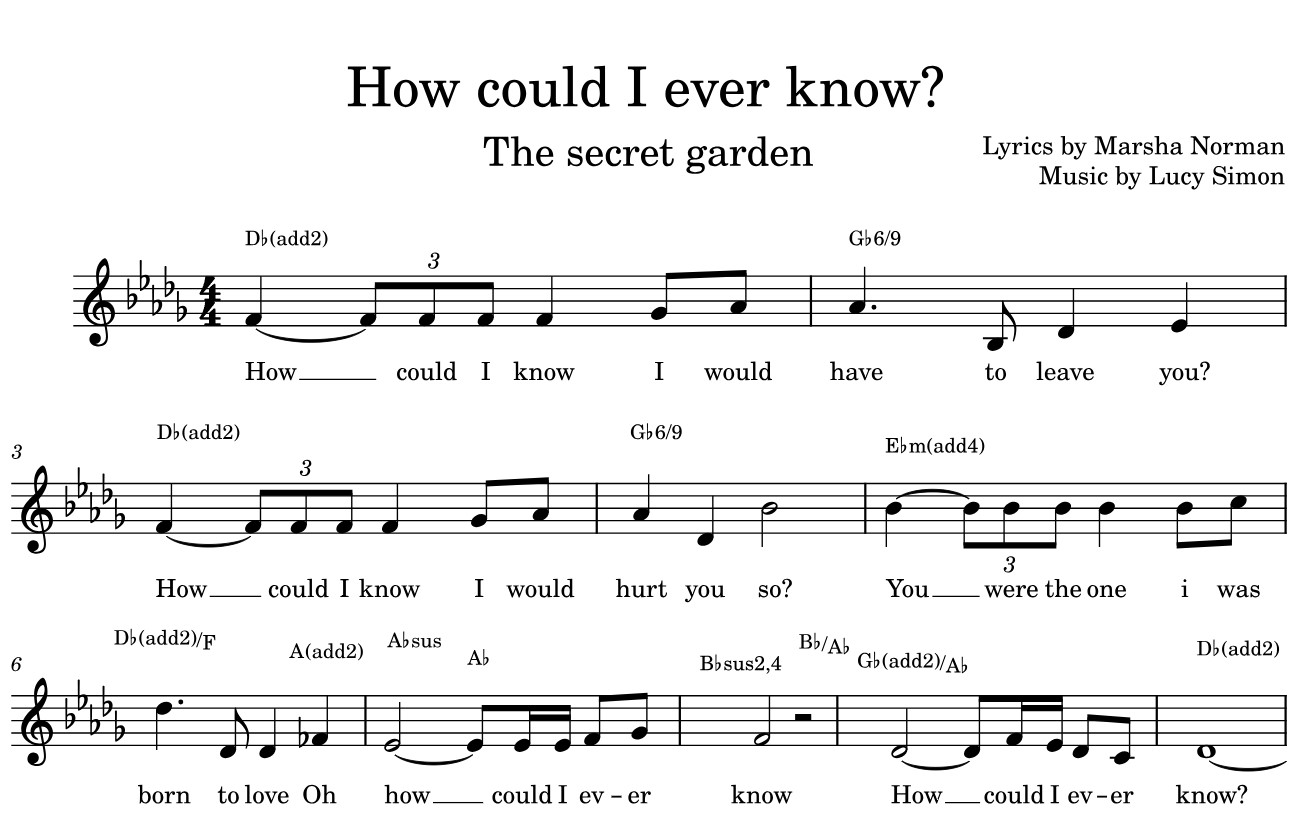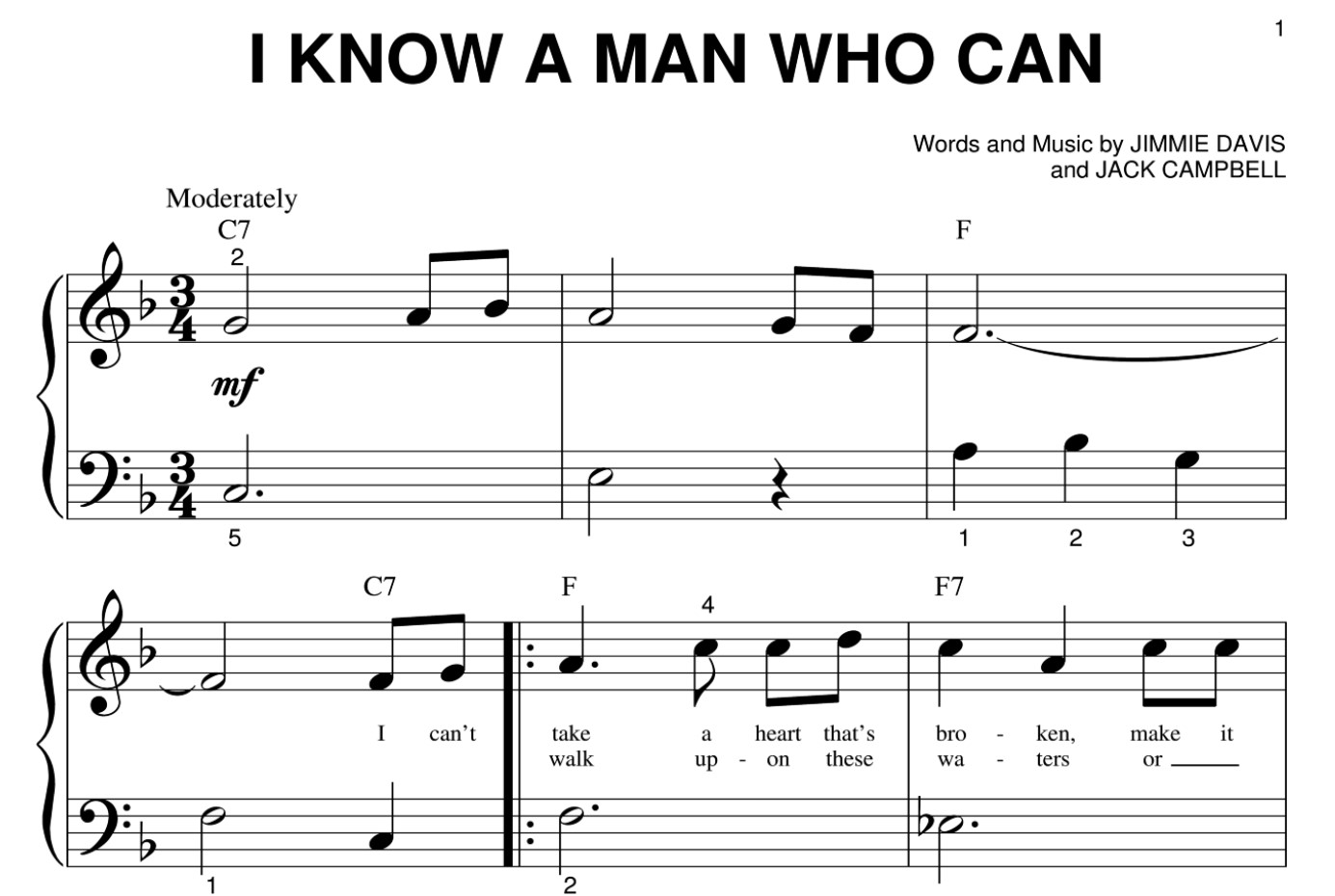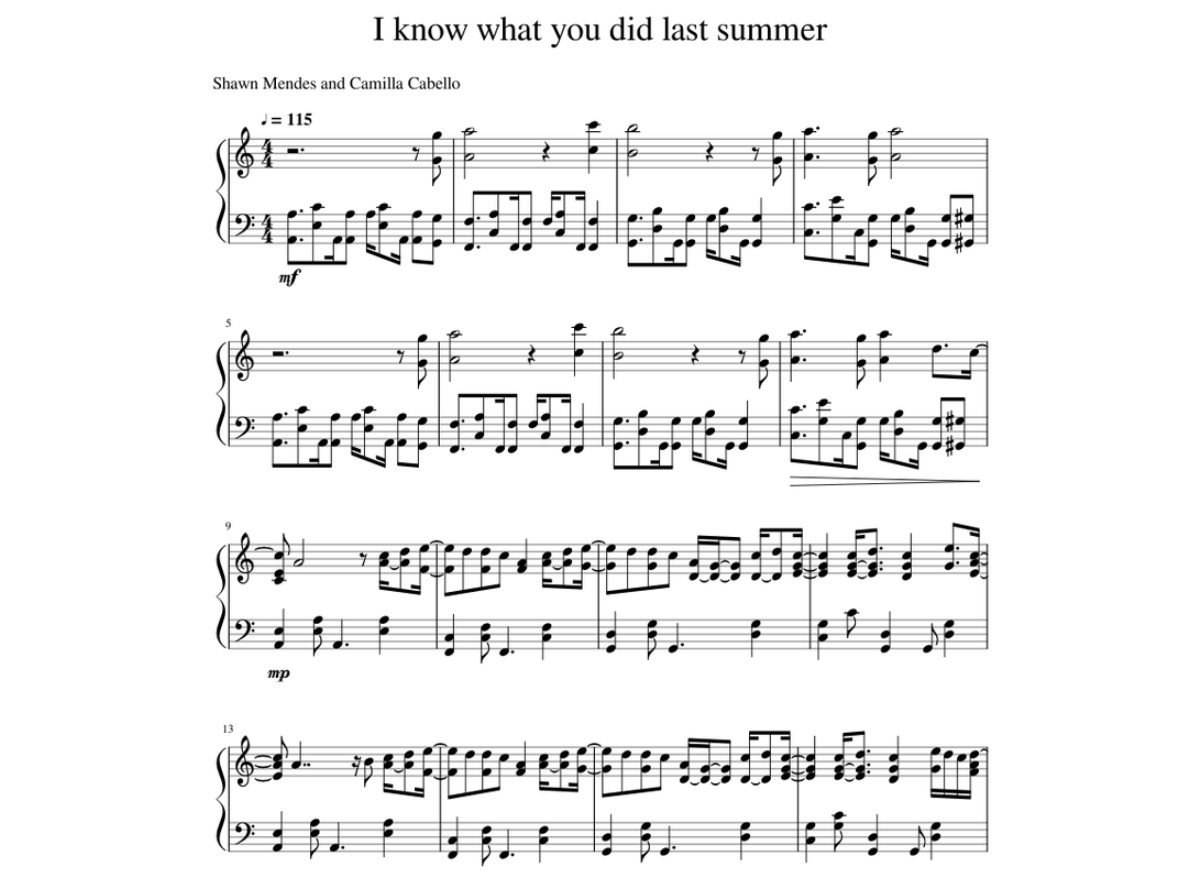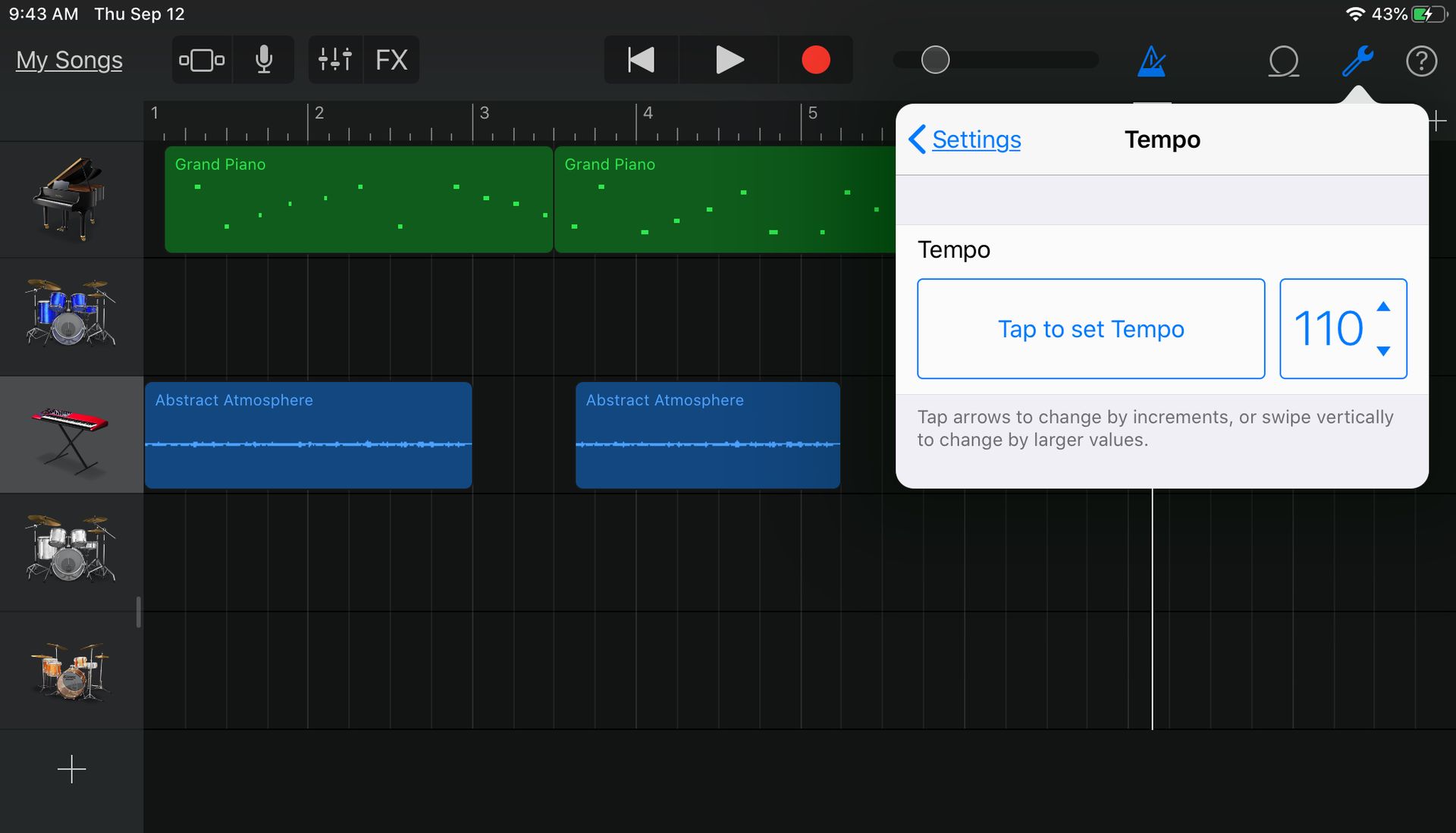Home>Production & Technology>Tempo>How To Know The Tempo Of Sheet Music
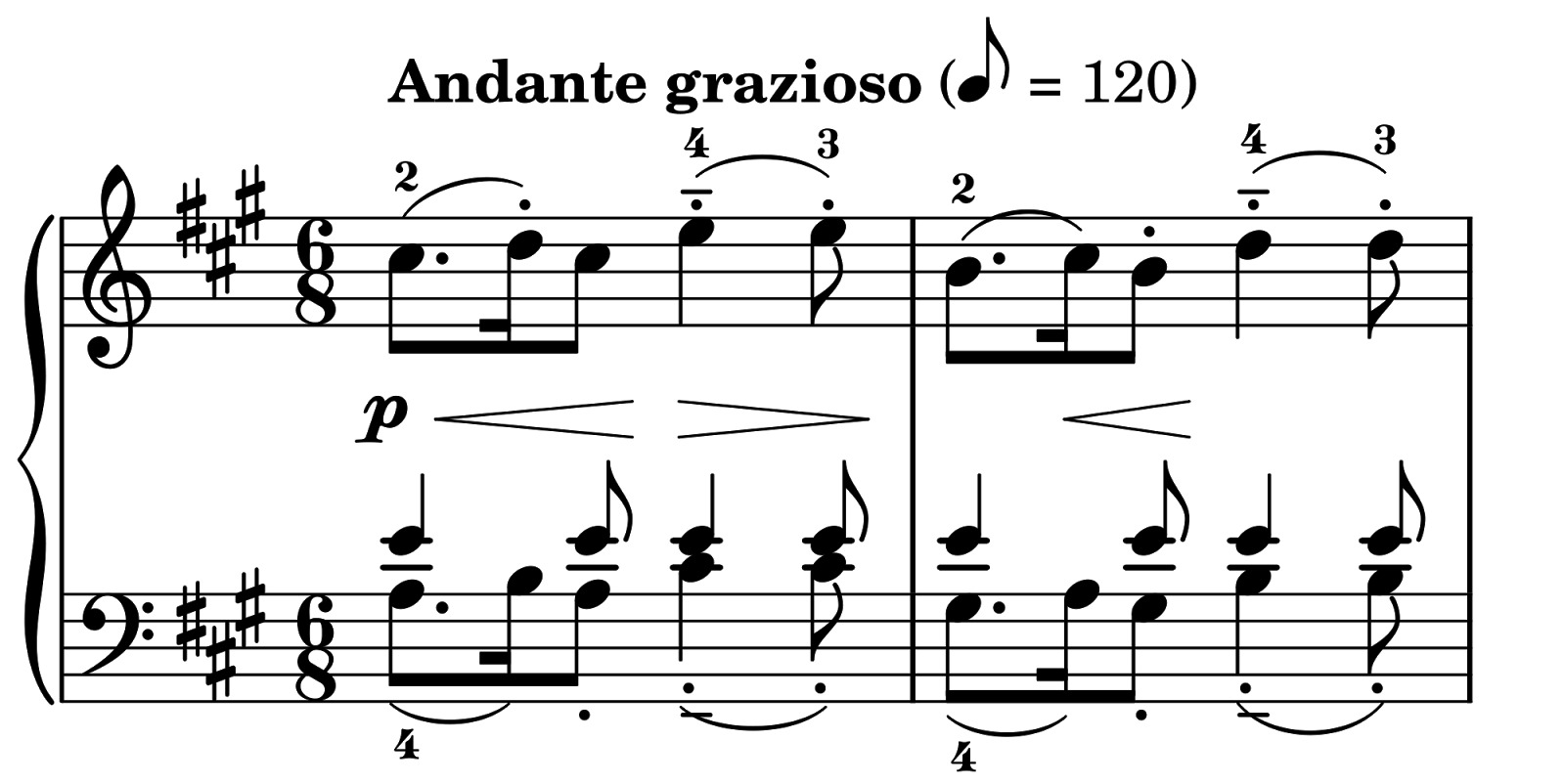

Tempo
How To Know The Tempo Of Sheet Music
Modified: January 22, 2024
Learn how to accurately determine the tempo of sheet music with our helpful guide. Discover the best techniques and tools for understanding tempo and improving your musical performance.
(Many of the links in this article redirect to a specific reviewed product. Your purchase of these products through affiliate links helps to generate commission for AudioLover.com, at no extra cost. Learn more)
Table of Contents
Introduction
When it comes to reading and playing sheet music, one crucial aspect that musicians must understand is tempo. Tempo refers to the speed or pace at which a musical piece is performed, and it plays a fundamental role in shaping the overall feel and energy of the music. Whether you’re a beginner or an experienced musician, having a solid grasp of tempo is essential to accurately interpreting and performing sheet music.
In this article, we will explore the various methods and techniques for determining the tempo of sheet music. From using a metronome to analyzing rhythm patterns and consulting tempo markings, there are multiple tools and resources at our disposal. By understanding and harnessing these techniques, musicians can effectively convey the intended mood and emotion of a musical composition.
Knowing the tempo of a piece of sheet music is not only important for individual musicians, but it also facilitates effective collaboration and ensemble playing. It allows all musicians involved to stay synchronized and play in unison, resulting in a cohesive and harmonious performance.
Moreover, tempo serves as an important cue for expressing the stylistic and emotional nuances of the music. Different tempos evoke different moods and convey various musical genres or styles. For instance, a fast tempo may create a sense of excitement or urgency, while a slow tempo can enhance the emotional depth and subtlety of a piece.
Throughout this article, we will explore the most common methods for determining the tempo in sheet music. From traditional tools like metronomes and tempo markings, to more intuitive methods like analyzing rhythmic patterns and listening to recordings, we will provide a comprehensive guide to help musicians accurately identify and interpret the tempo of any musical composition.
Understanding Tempo in Music
Tempo is a fundamental element of music that refers to the speed or pace at which a musical piece is played. It dictates the overall rhythm and feel of the music and greatly influences the emotional impact it has on the audience. Understanding tempo is crucial for musicians as it allows them to accurately convey the intended expression and mood of a composition.
Tempo is typically indicated at the beginning of a piece of sheet music through tempo markings or Italian terms. These markings provide a general indication of the desired tempo, but it is important to note that they are subjective and open to interpretation. Common tempo markings include “Largo” (very slow), “Moderato” (moderate), “Allegro” (fast), and “Presto” (very fast), among many others.
Furthermore, tempo can also be expressed through numerical values known as beats per minute (BPM), which indicate the number of beats or pulses occurring within one minute of music. BPM provides a more precise measurement of tempo and is particularly useful when using a metronome or conducting a piece.
It is worth noting that tempo not only refers to the overall speed of a piece but also encompasses subtle variations within a composition. Musicians often encounter tempo changes and fluctuations known as rubato, where certain phrases or sections may be played with a slightly faster or slower tempo for expressive purposes. These nuanced changes add depth and emotional impact to the music.
Understanding the tempo of a piece is not limited to simply knowing its speed. It also involves comprehending the rhythmic patterns and accents within the music. For example, a piece in 4/4 time signature may have a steady beat of four quarter notes per measure, but the accents and syncopations can vary, creating different rhythmic patterns and adding complexity to the music.
Tempo serves as a guiding force for musicians, helping them maintain a consistent pace and stay in sync with other performers in an ensemble or accompaniment. It also aids in the interpretation of dynamics and articulations, allowing musicians to appropriately emphasize and shape the musical phrases.
In summary, tempo is a vital aspect of music that encompasses the speed, rhythm, and overall feel of a composition. It plays a pivotal role in expressing the intended emotion and style of the music and serves as a framework for musicians to interpret and perform sheet music accurately.
Importance of Knowing the Tempo
Knowing the tempo of a piece of sheet music is of utmost importance for musicians. It has a significant impact on the overall performance and interpretation of the music. Here are a few reasons why understanding and accurately identifying the tempo is crucial:
- Musical Expression: Tempo sets the mood and energy of a musical piece. By knowing the tempo, musicians can effectively convey the intended expression and emotions of the composer. Whether it’s a lively and upbeat tempo or a slow and melancholic one, understanding the tempo allows musicians to bring the music to life with authenticity.
- Ensemble Playing: In ensemble settings, where multiple musicians are performing together, knowing the tempo is essential for synchronization. It ensures that all performers are on the same page and playing at the same speed. Without a common understanding of the tempo, the performance may lack cohesion and sound disjointed.
- Dynamic Variations: Tempo serves as a crucial reference for interpreting dynamic markings. It helps musicians understand how to shape the dynamics of a musical piece, such as crescendo or decrescendo, in relation to the speed of the music. Misinterpreting the tempo could lead to incorrect dynamic interpretations and an inaccurate portrayal of the music.
- Effective Rehearsals: When rehearsing a piece of music, knowing the tempo enables musicians to work together efficiently. It allows them to focus on specific sections and practice appropriate techniques, such as resolving challenging passages or achieving precise rhythmic accuracy.
- Consistency: A consistent tempo is vital for maintaining a steady rhythm throughout a musical performance. It provides a foundation for musicians to follow and ensures that the music flows smoothly and coherently. Whether it’s a solo performance or an ensemble, a stable tempo creates a polished and professional presentation.
- Musical Analysis: Understanding the tempo of a piece aids in analyzing its structure and musical elements. It enables musicians to recognize patterns, phrasing, and formal sections within the composition. Consequently, this deeper understanding facilitates better interpretation and enhances overall musicality.
In summary, knowing the tempo of a musical piece is essential for effective musical expression, ensemble playing, dynamic variations, efficient rehearsals, maintaining consistency, and analyzing the music on a deeper level. By paying attention to the tempo, musicians can fully capture the essence and intention of the composition, delivering a more engaging and authentic performance.
Different Methods to Determine Tempo in Sheet Music
There are several methods and techniques musicians can use to determine the tempo of a piece in sheet music. These methods range from traditional tools to more intuitive approaches. By employing a combination of these techniques, musicians can accurately identify and interpret the tempo of any composition. Here are the different methods to determine tempo in sheet music:
- Metronome: One of the most common and reliable tools for determining tempo is a metronome. A metronome is a device that produces regular ticks or electronic sounds at a specific tempo. Musicians can set the metronome to the desired tempo indicated in the sheet music and follow the beats to maintain a consistent speed.
- Tempo Markings: Sheet music often includes tempo markings or Italian terms that indicate the desired tempo. These markings can be words like “Allegro” (fast), “Adagio” (slow), or specific instructions such as “Andante” (at a walking pace) or “Vivace” (lively). By referring to these markings, musicians can get a general idea of the tempo intended by the composer.
- Analyzing Rhythmic Patterns: Another method to determine tempo is to analyze the rhythmic patterns in the sheet music. By examining the note values, rests, and patterns within the music, musicians can gauge the inherent pulse and speed. Identifying the recurring rhythmic elements can provide valuable clues about the tempo of the piece.
- Listening to Recordings: Listening to professional recordings of the piece can be a helpful method for understanding the tempo. By hearing how other musicians interpret the music, musicians can gain insights into the appropriate pacing and overall feel of the piece. This method allows for a more nuanced understanding of the tempo, taking into account the musical expression and performance style.
- Consulting Music Theory Resources: Music theory resources, such as textbooks or online references, can provide valuable information about the general tempo conventions of different musical styles and genres. By studying these resources, musicians can gain insight into the typical tempo ranges associated with specific music styles, helping them make informed decisions about the tempo of a particular piece.
By combining these methods, musicians can develop a comprehensive understanding of the tempo in sheet music. It is important to note that these techniques are not exclusive, and musicians can adjust and adapt them based on their personal interpretation and artistic choices. Ultimately, the goal is to accurately capture the intended tempo of the composition and convey it through a skillful and engaging performance.
Method 1: Metronome
A metronome is a valuable tool for musicians to accurately determine and maintain tempo in sheet music. It provides a consistent and audible reference point by producing regular ticks or electronic sounds at a specific tempo. Here’s how musicians can effectively use a metronome to determine tempo:
1. Set the Metronome: The first step is to set the metronome to the desired tempo indicated in the sheet music. Most metronomes have a dial or button to adjust the tempo, allowing you to match it precisely to the markings on the sheet music.
2. Start Slowly: If you are unsure of the correct tempo, it is advisable to start with a slower tempo and gradually increase it. This allows you to find the tempo that feels comfortable and accurate for the piece. As you gain familiarity with the music, you can gradually increase the metronome’s speed to match the desired tempo.
3. Practice with the Metronome: Once the metronome is set to the appropriate tempo, begin practicing the piece with the metronome as a guide. Pay close attention to the steady beat and strive to align your playing with the metronome’s ticks. This helps develop a sense of rhythmic precision and timing.
4. Use Subdivisions: Metronomes often offer the option to subdivide the beats, providing a more detailed reference for intricate passages. By using subdivisions, such as eighth notes or sixteenth notes, musicians can fine-tune their timing and maintain a consistent tempo throughout the piece.
5. Focus on Transitions and Tempo Changes: Pay special attention to any transitions or tempo changes within the sheet music. Smoothly transitioning from one tempo to another requires careful practice with the metronome to maintain a seamless flow. This ensures that the overall performance remains coherent and unaffected by any sudden changes in tempo.
6. Internalize the Tempo: With regular practice using the metronome, the desired tempo for a particular piece will become ingrained in your musical instincts. This allows you to rely less on the metronome and play with a natural sense of tempo while still maintaining accuracy.
Using a metronome is not only beneficial for determining the tempo but also for developing a strong sense of timing, precision, and rhythmic consistency. It helps musicians maintain a steady tempo, stay synchronized with other performers, and deliver confident and polished performances.
Remember, while the metronome provides a reliable and objective reference, it is essential to balance it with musical expression and artistic interpretation. A metronome should be used as a tool to guide and refine your playing, but it is equally important to infuse the music with your own personal musicality and expression.
Method 2: Tempo Markings
Tempo markings, also known as tempo indications or tempo instructions, are notations in sheet music that indicate the desired speed or pace at which a musical piece should be performed. Here’s how musicians can effectively use tempo markings to determine tempo:
1. Locate Tempo Markings: Tempo markings are usually placed at the beginning of a piece or section and are written in Italian. Look for words like “Allegro” (fast), “Adagio” (slow), “Andante” (at a walking pace), or specific instructions such as “Presto” (very fast) or “Largo” (very slow).
2. Understand the Indications: Familiarize yourself with the various tempo markings and their corresponding meanings. This will provide a general idea of the desired tempo set by the composer and the mood or character they intend to convey through the music.
3. Explore the Nuances: Tempo markings often come with additional terms or expressions that provide further guidance. For example, “Allegro con brio” means fast with vigor, while “Andante ma non troppo” signifies a walking pace, but not too much. These nuances offer insight into the desired interpretation and can help shape your understanding of the tempo.
4. Tempo Modifications: In some cases, composers may include specific tempo modifications within the sheet music. These modifications can be indicated with additional tempo markings or symbols such as accelerando (getting faster), ritardando (getting slower), or fermata (a pause or hold). Pay attention to these indications as they can vary the tempo within different sections of the piece.
5. Use Tempo as a Starting Point: While tempo markings provide a general indication, it’s important to remember that they are subjective and open to interpretation. Use the tempo marking as a starting point, but be prepared to adjust it based on your own musical instincts and the overall feel of the piece.
6. Consider the Musical Context: Take into account the style, genre, and historical period of the music. Different musical styles have typical tempo ranges associated with them. Understanding these conventions can further inform your interpretation of the tempo markings and help you determine an appropriate tempo for the piece.
7. Consult Recordings or Performances: Listening to professional recordings or live performances of the piece can provide additional insight into how other musicians interpret the tempo markings. Use these references as a guide to help you make informed decisions about the tempo of the piece.
Tempo markings can provide valuable guidance, but it’s important to balance them with your own musicality and interpretation. Remember that tempo is not merely a specific number of beats per minute, but also encompasses the overall feel, expression, and emotional impact of the music. By carefully considering the tempo markings, musical context, and your own artistic instincts, you can accurately determine the tempo and bring the composition to life in a way that resonates with both the composer’s intentions and your own musical interpretation.
Method 3: Analyzing Rhythmic Patterns
Analyzing the rhythmic patterns in sheet music is an effective method for determining the tempo of a piece. By examining the note values, rests, and patterns within the music, musicians can gauge the inherent pulse and speed. Here’s how you can use this method to determine the tempo:
1. Identify the Time Signature: Start by identifying the time signature of the piece. The time signature provides information about the number of beats in each measure and the type of note that receives one beat. Common time signatures include 4/4, 3/4, or 6/8. Understanding the time signature will help you establish a rhythmic foundation for the piece.
2. Count the Beats: Once you have identified the time signature, count the beats in each measure. Pay attention to the formulas of the time signature, such as four quarter notes in 4/4 time or three quarter notes in 3/4 time. By accurately counting and subdividing the beats, you can establish the basic pulse and rhythm of the music.
3. Analyze the Note Values: Take note of the note values used in the sheet music. Different note values represent different durations, and their arrangement within the measure can indicate the tempo. For example, a piece with predominantly eighth notes or sixteenth notes might suggest a faster tempo, while a piece with longer note values like whole notes or half notes might suggest a slower tempo.
4. Look for Patterns: Look for recurring rhythmic patterns in the music. Pay attention to patterns in note values, rests, and accents. These patterns can provide clues about the underlying tempo and rhythmic structure of the composition. Identifying and internalizing these patterns will help you maintain a consistent tempo throughout the piece.
5. Pay attention to Syncopation and Accents: Syncopated rhythms and accents can also provide important information about the tempo. Syncopation occurs when a normally weak beat is emphasized, creating a rhythmic tension. Accents, indicated by stress marks or dynamic markings, can denote stronger beats or important rhythmic points. By recognizing these rhythmic elements, you can better understand the intended tempo and rhythmic feel of the music.
6. Practice with a Consistent Pulse: Once you have analyzed the rhythmic patterns, practice the piece with a consistent pulse or rhythm. Use a metronome or an internalized sense of timing to maintain a steady beat throughout. This will help solidify your understanding of the tempo and ensure a cohesive performance.
By carefully analyzing the rhythmic patterns in the sheet music, you can gain valuable insight into the tempo of a composition. This method allows you to establish a rhythmic foundation, identify patterns, and confidently interpret the music’s timing and pulse. Combining this method with other techniques such as using a metronome or consulting tempo markings can provide a well-rounded approach to accurately determining tempo in sheet music.
Method 4: Listening to Recordings
Listening to professional recordings of a musical piece is an effective method for determining the tempo. By hearing how other musicians interpret the music, you can gain valuable insights into the appropriate pacing and overall feel of the piece. Here’s how you can use this method to determine tempo:
1. Choose Reliable Recordings: Select reputable recordings of the piece you’re studying. Choose recordings by renowned musicians or ensembles known for their accuracy and musicality. Reliable recordings provide a solid reference point for understanding the intended tempo of the composition.
2. Focus on the Overall Feel: Listen to the recording and pay attention to the overall feel and energy of the performance. Note the speed at which the music flows and whether it feels fast, moderate, or slow. Use this as a starting point to gauge the tempo of the piece.
3. Identify Musical Elements: Listen for musical elements that can inform the tempo, such as the rhythmic patterns, melodic phrasing, and articulations used by the musicians. Note any variations in speed or dynamics that could indicate tempo changes within the piece.
4. Observe the Pulse: Pay attention to the pulse or beat that is maintained throughout the music. Internalize the rhythm and try to tap along with the recording. By internalizing the pulse, you can gain a deeper understanding of the tempo and rhythmic structure of the piece.
5. Note Interpretive Choices: Observe any interpretive choices made by the performers that may affect the perceived tempo. Musicians often add personal touches and expressive nuances that can slightly alter the pacing. Take these choices into consideration but remain mindful of the composer’s original intentions.
6. Compare Multiple Recordings: Listen to multiple recordings of the same piece by different musicians or ensembles. Comparing different interpretations can give you a broader understanding of the range of tempos that can be applied to the music. It can also help you develop your own interpretation of the piece’s tempo.
7. Verify with Other Methods: After listening to recordings, verify your understanding of the tempo by cross-referencing with other methods, such as tempo markings or analyzing rhythmic patterns in the sheet music. This ensures a well-rounded approach and helps confirm the accuracy of your assessment.
Listening to recordings provides valuable insight into the tempo of a musical piece. It helps you understand the intended pacing and expression, allowing you to incorporate that knowledge into your own performance. By combining this method with other techniques, you can effectively determine and interpret the tempo of the piece and deliver a faithful rendition of the music.
Method 5: Consulting Music Theory Resources
Consulting music theory resources is a valuable method for determining the tempo of a musical piece. Music theory references, such as textbooks, online resources, or expert guidance, can provide valuable information about the general tempo conventions of different musical styles and genres. Here’s how you can use this method to determine tempo:
1. Research Music Styles and Genres: Familiarize yourself with various music styles and genres. Different musical genres have their own typical tempo ranges. For example, a lively dance genre like salsa may have a higher tempo range compared to a slow ballad. Understanding the general characteristics and tempo conventions of different genres can help inform your interpretation.
2. Study Tempo Terminology: Review tempo terminology used in music theory. Become familiar with Italian terms commonly used to indicate tempo, such as “Allegro” (fast), “Adagio” (slow), “Andante” (at a walking pace), and “Presto” (very fast). Understanding these terms will allow you to better interpret tempo markings in the sheet music and determine the appropriate tempo for the piece.
3. Explore Historical Context: Consider the historical period of the composition. Different time periods have distinctive tempo conventions. For instance, Baroque music often features fast and lively tempos, while music from the Romantic era might have a wider range of tempo variations and expressive nuances. Understanding the historical context can provide insights into the composer’s intentions and the expected tempo of the piece.
4. Analyze Comparable Repertoire: Look for similar repertoire or compositions by the same composer or within the same style or period. Analyze the tempo markings and performance practices associated with those pieces. This comparative analysis can help you establish a reference point for determining the tempo of the piece you are studying.
5. Seek Expert Guidance: When in doubt, seek guidance from a music teacher, mentor, or other experts with experience in the genre or style you are studying. They can provide valuable insights and recommendations based on their knowledge and expertise, helping you make informed decisions about the tempo of the piece.
6. Consider Personal Interpretation: While consulting music theory resources is valuable, remember to balance it with your own artistic interpretation and musicality. These resources provide guidelines, but ultimately, the tempo should also reflect your artistic choices and the emotional expression you want to convey through the music.
Consulting music theory resources offers a systematic approach to understanding tempo conventions in different styles and genres. By integrating this method with other techniques, such as analyzing rhythmic patterns and referring to tempo markings, you can establish a comprehensive understanding of the intended tempo and deliver an accurate and expressive performance of the musical piece.
Conclusion
Determining the tempo of a piece of sheet music is crucial for musicians to accurately interpret and perform the music. Throughout this article, we have explored various methods and techniques for determining tempo, including using a metronome, referring to tempo markings, analyzing rhythmic patterns, listening to recordings, and consulting music theory resources. By employing these methods, musicians can effectively identify and interpret the tempo of any musical composition.
Understanding tempo is essential for musical expression, ensemble playing, dynamic variations, effective rehearsals, maintaining consistency, and analyzing the music’s structure. By knowing the tempo, musicians can appropriately convey the intended mood and emotions of the music, stay synchronized with other performers, and deliver polished and engaging performances.
Each method discussed in this article offers unique advantages. Metronomes provide a reliable and objective reference, tempo markings give insight into the composer’s intentions, analyzing rhythmic patterns aids in understanding the pulse and speed of the music, listening to recordings offers valuable interpretations, and consulting music theory resources provides a broader context and convention.
Ultimately, determining tempo requires a combination of these methods, as well as personal interpretation and artistic choices. It is important to balance objective references with musicality and expressiveness to deliver an authentic and compelling performance.
By regularly practicing and refining one’s understanding of tempo, musicians can develop a keen sense of timing, rhythmic precision, and interpretation. This not only enhances their individual musicality but also enables them to engage in collaborative and ensemble playing effectively.
In conclusion, tempo is a fundamental element that shapes the overall feel and energy of a musical piece. By utilizing the methods and techniques discussed in this article, musicians can confidently and accurately determine the tempo of sheet music, allowing them to effectively convey the intended expression, rhythm, and emotion of the composition. With a solid understanding of tempo, musicians can immerse themselves in the music, connect with the audience, and bring the sheet music to life in a captivating and meaningful way.

